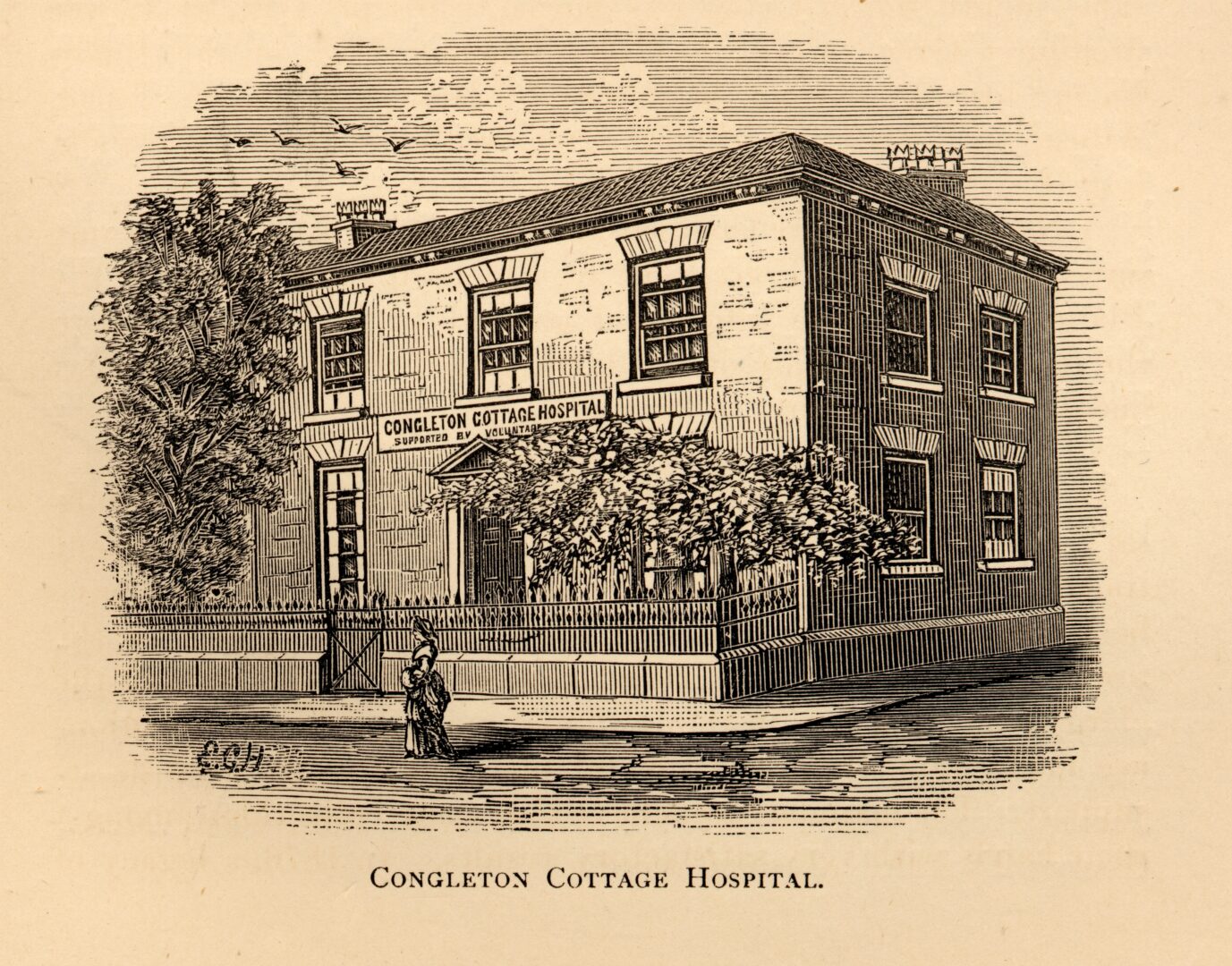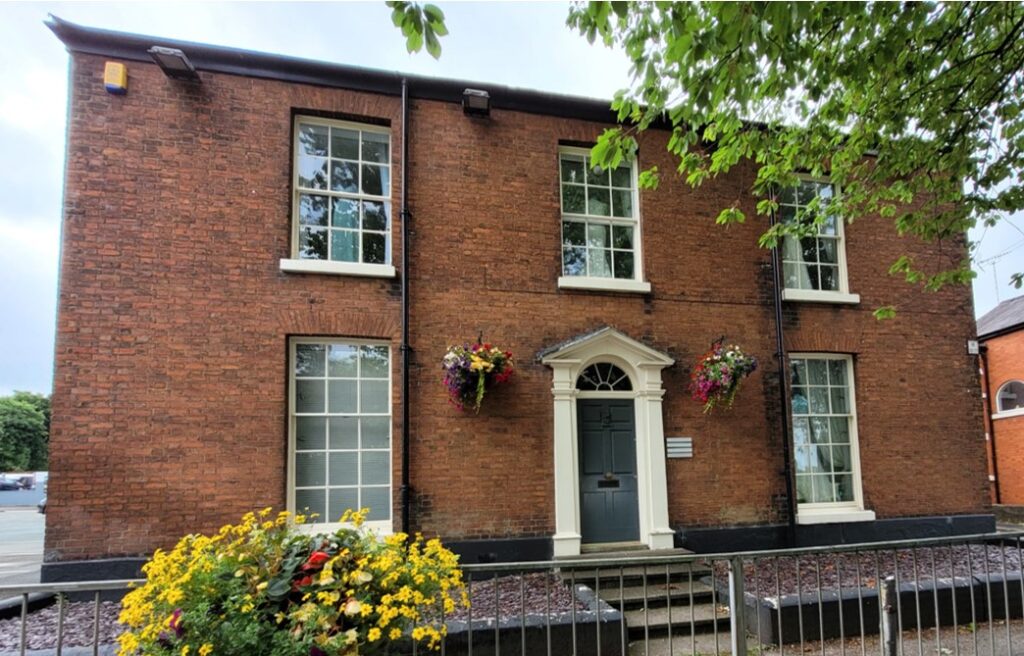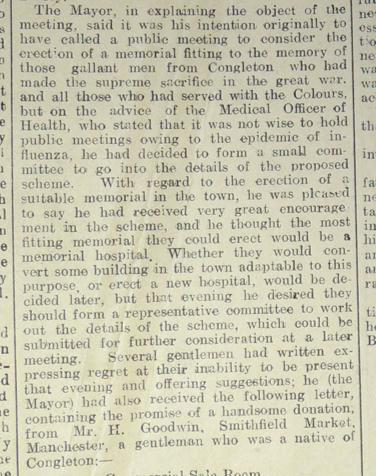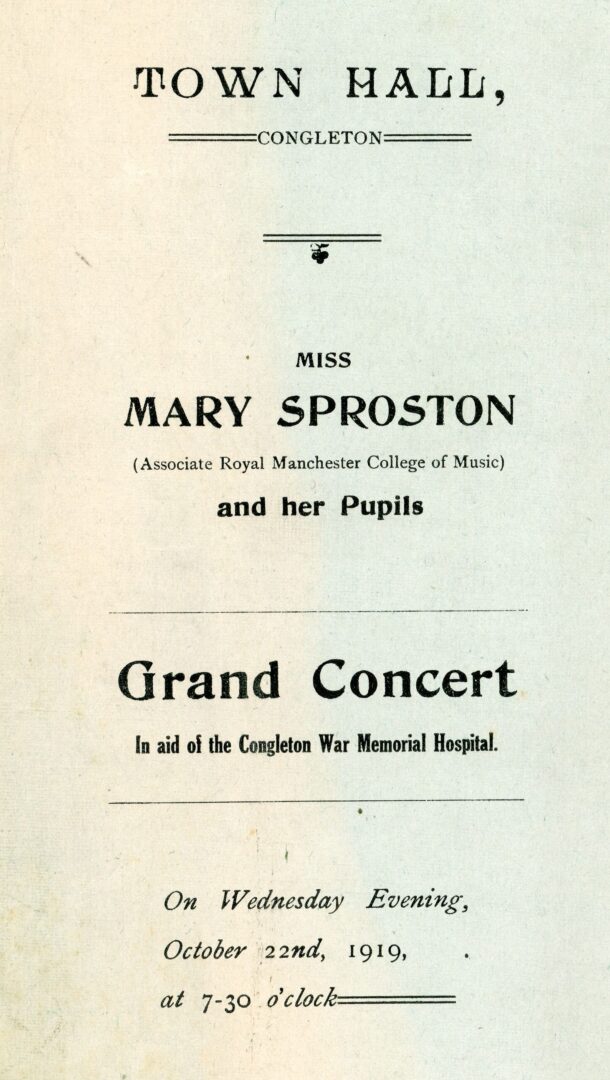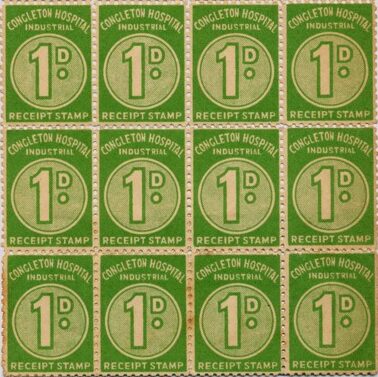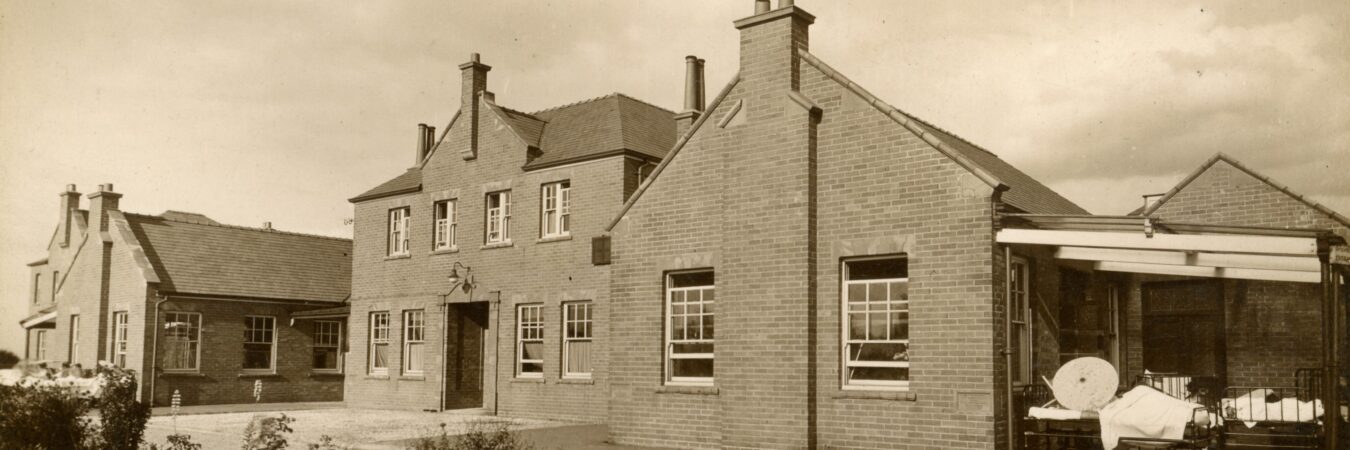
Congleton War Memorial Hospital 1924 – 2024
Our hospital – a permanent legacy
In the middle of the nineteenth century, surgery in Congleton was a hit and miss affair. The first anaesthetics came to this country in 1846 and at least two operations using chloroform took place in Congleton in 1852, but they were performed on the floor in the doctor’s surgery.
Then in 1866 the Cottage Hospital was opened in Park Street, with provision for just ten beds. It was supported by voluntary contributions.
In 1918, most towns throughout Great Britain were looking for ways to commemorate the sacrifice made by those who had served during World War I. Congleton was no exception.
At the end of the war, Robert Head printed the Congleton Peace Souvenir, in which he listed all those men and the one woman who had served in the forces during the conflict. How was Congleton going to commemorate the sacrifice these people had made? Most towns were planning war memorials like the one in Lawton Street.
Enter Congleton’s mayor, Councillor Fred Jackson, one of the town’s principal fustian manufacturers. He suggested that the town should build a new hospital as a memorial, which would also benefit present and future inhabitants of the town.
Despite the restrictions on public meetings owing to the influenza epidemic, a group of prominent citizens met on 15th December 1918 to discuss Councillor Jackson’s proposal. The cost would be £11,000, or £1 for every inhabitant of the town.
As the proposal would require the support of the town’s population, Mr Charles Russell Hall expressed the view that ordinary people should be involved in the management of the new hospital, as these were “democratic days”.
Mr Henry Goodall, a Manchester fruit importer who originally came from Congleton, then offered a donation of £1,000 on condition it was used to build a new hospital.
The decision was taken. Fundraising continued enthusiastically, with the following personal and corporate donations being made before the end of 1918:
Mr Henry Goodwin £1,000
Cllr and Mrs Jackson £250
Stott and Smiths £250
Berisfords £250
Mr Hall £100
Mr and Mrs Plant £100
Sir E Tootal Broadhurst £100
By early 1919 donations had reached £3,000. In September this had increased to £5,782.10.6d and by November 1920 donations had risen to £7,200.
It was soon realised that the site of the existing Cottage Hospital was too cramped to allow it to expand and, with more than £7,000 to spend, it was possible to purchase the present hospital site on Canal Street. This comprised three fields, Garden Field, Clulow’s Field and Banky Field, a total of 7 acres, 2 roods and 2 perches.
Fundraising continued, with a three-day bazaar in October 1922 raising £5,575.14.6d. More money came from a variety of sources, including worker subscriptions at 10/- (50p) a year for adults and 5/- (25p) for children, concerts in the town hall and the proceeds from the carnival
By the end of the year a grand total of £14,000 had been achieved.
Mr J H Walters, a local architect , was commissioned to design the building. He published his plans at the end of July 1921.
The first milestone was achieved when the mayor, Cllr Samuel Maskery, cut the first sod for the foundations, then on 4th August 1923, Sir Walter Shakerley of Somerford Hall laid the foundation stone. This stone can still be seen in the wall of the main entrance corridor of the hospital.
The completion of the new hospital was a considerable achievement for a town the size of Congleton. It had been a whole community effort. It was with great pride that the town welcomed the Duke of York and future King George VI when he officially opened the hospital on 22nd May 1924.
In 1940 a nurses’ home was constructed but not immediately occupied. The hospital also ran its own training school for enrolled nurses
The town’s commitment to its hospital never wavered, even during the Second World War, when Congleton and District was tasked to raise £240,000 in ‘Wings for Victory Week’ in June 1943.
Congleton was at the forefront when it came to health insurance. It had its own system run by ‘The Hospital Industrial Fund Committee’. Employers and employees could buy stamps every week to cover the expense of using the hospital.
Until its incorporation into the National Health Service in 1948, the hospital was fully supported by subscriptions and donations.
Some of the documents and pictures relating to the hospital from the museum’s collection can be seen below:

